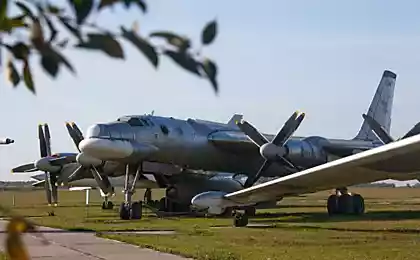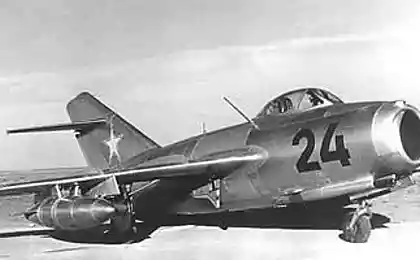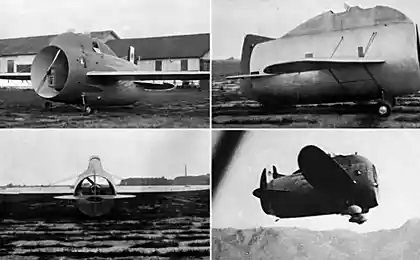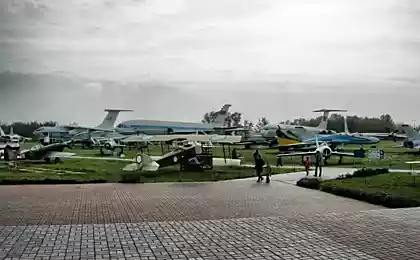1304
Museum of long-range aircraft (36 photos)
Diaghilev - air base in the Ryazan region, located 11 km west of the city of Ryazan. The museum is located at the air base long-range aviation, in which I went. Keep in mind that the museum is closed on weekends.
1. We begin our tour with the TU-95 is a Soviet turboprop strategic bomber-missile, one of the fastest screw aircraft, which became one of the symbols of the Cold War. Russian bear. The only accepted for service and mass production of turboprop bomber. Designed to engage cruise missiles important objects in the rear of the enemy at any time and under any weather conditions. In operation since 1956.
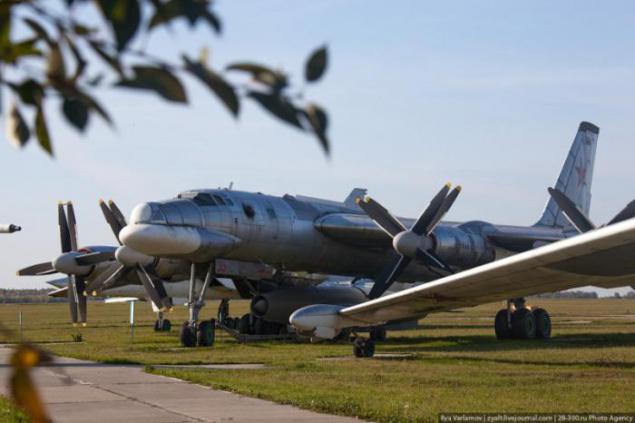
2. TU-95 went into the series with engines NK-12. NK-12 engine is still the most powerful turboprop engine in the world. NK-12 has a 14-stage compressor and a five-speed high-efficiency turbine. Efficiency of the turbine engine NK-12 is 94%, which is a record.

3. High engine power and screw design determines its unprecedented noise, Tu-95 is one of the noisiest aircraft in the world and even pinpoint detection systems on submarines, but this is not critical when applying massive missile and nuclear strikes.
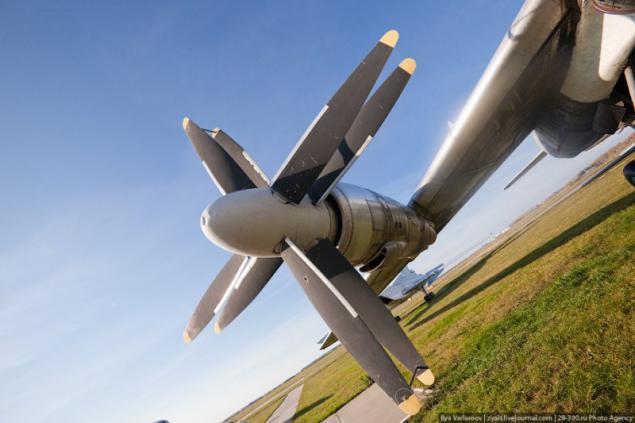
4. Coaxial screws with variable pitch (AB-60K) installed on the Tu-95, had a diameter of more than 6 meters. The aircraft has an automatic engine start. Fuel is located in the wing and fuselage 11 soft fuel tanks.
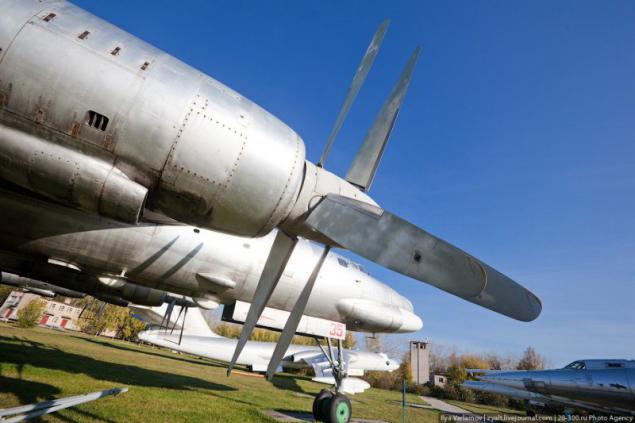
5. Defensive armament Tu-95 consists of 23-mm aircraft cannons. On the different versions of the aircraft number varies from six paired guns AM-23 in three defensive units (upper, lower and stern lights) to two guns GS-23 aft.

6. Bomb load Tu-95 can reach 12,000 kg. In the fuselage bomb bay can be accommodated svobodnopadayuschie (including nuclear) bombs caliber up to 9000 kg.
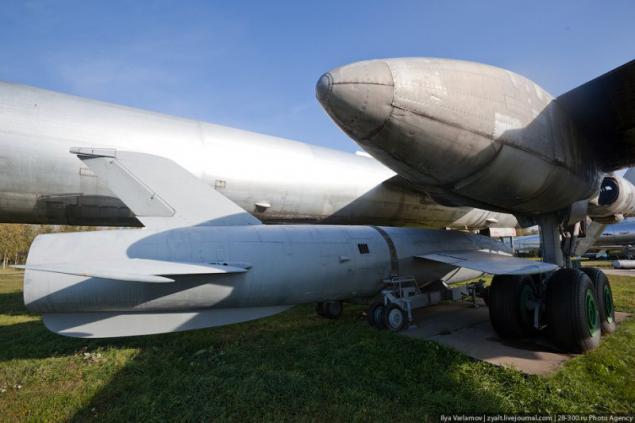

Twin cannon fodder in the lantern.
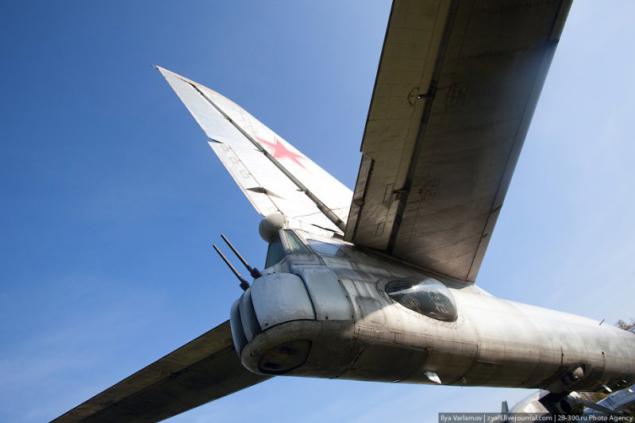
9. Nearby are the TU-95MS. These modifications of the Tu-95 aircraft form the basis of the strategic forces of Russia, is the carrier of cruise missiles X-55. In a modification of the Tu-96MS6 in the bomb bay on the rocker launcher drum which is located six such missiles. In a modification of the Tu-95MS16 in addition to vnutrifyuzelyazhnyh launcher, suspension provided ten more X-55 missiles on four underwing holders. Strictly speaking, the Tu-95MS is a variant of the Tu-142, instead of the original Tu-95.

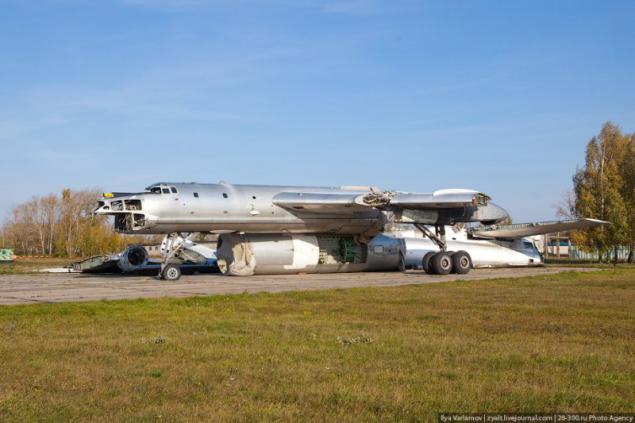
11. M-4, according to NATO classification "Bison" - the world's first jet bomber, received by the troops. Created simultaneously with the Tu-95, differing from it more speed, but less range. In order to reduce the weight used Large assembly, which complicates the production of the aircraft. The same feature was aerodynamically clean wing (absence of gondolas for the chassis and engines on the wing) and as a consequence - the "bicycle" chassis that's just made it extremely difficult to land the plane and practically impossible modernization of the bomb bay and the use of external load.

12. One of the most beautiful aircraft. Maximum take-off weight of the airship was 181, 5 tons, the speed at an altitude of 6700 m reached 947 km / h, service ceiling at takeoff weight of 138 tons - 12,500 m. The designers were able to place on the plane at the time a huge amount of fuel - 132 390 liters, but real maximum filling is limited to 123600 liters.

13. The museum is a modification of the M-4 Fuel tanker. In the bomb bay placed an additional tank, fuel transfer equipment and winches for the release of the "cone».
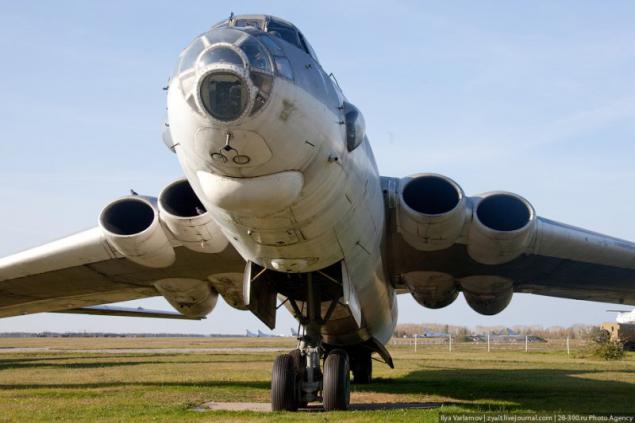
14. Of particular interest is the received version of the chassis bomber "M". Was chosen bicycle scheme from the front "vzdyblivayuscheysya" trolley and side pillars at the wing tips. Rotate carried out by controlling the head a couple of four-wheel bogie wheels on the front. Turn the pair to change the direction of the trolley, and behind it - and the entire aircraft. On mode "vzdyblivaniya" control pair is automatically turned off. At the end of a running nose of the car is lifted and the angle of attack is increased. Takeoff occurred with little or no intervention of the pilot.
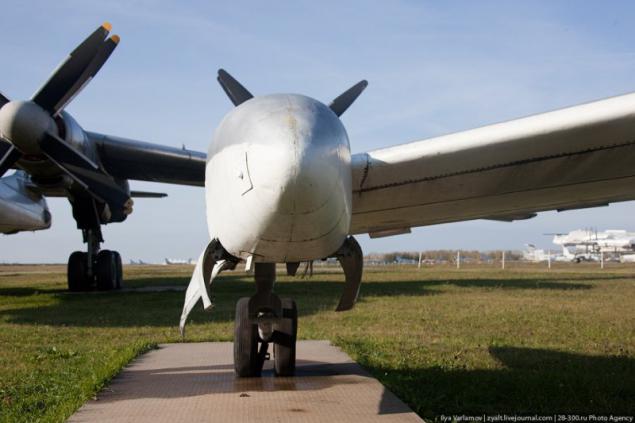
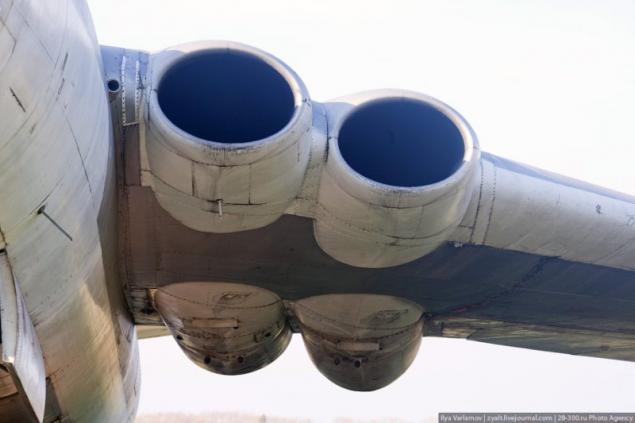
16. Tu-22M, for the codification of NATO: Backfire - long-range supersonic bomber bomber / reconnaissance variable geometry wing. The maximum speed of 2300 km / h, the maximum speed of the earth in 1050 km / h cruising speed of 930 km / h, the takeoff speed of 370 km / h, the landing speed of 285 km / h; ceiling of 13 300 m; combat range with combat load of 12 000 kg at supersonic speeds 1500-1850 km at subsonic speeds and extremely low altitude - 1500-1650 km at subsonic Mixed profile - 2410 km, the length of the runway of 2000-2100 m; path length of 1200-1300 m, maximum operating overload 2, 5.

17. Air intakes with a vertical wedge (Tu-22M3 - horizontal) are located on the sides of the fuselage. Fuel capacity is located in integral tanks in the front (1, 2 tanks), medium (3, 4, 5), the tail (6, 7, 8, tanks) of the fuselage, a tail fin (9 tank) and wing tanks, including a rotatable portion of the wing (console).
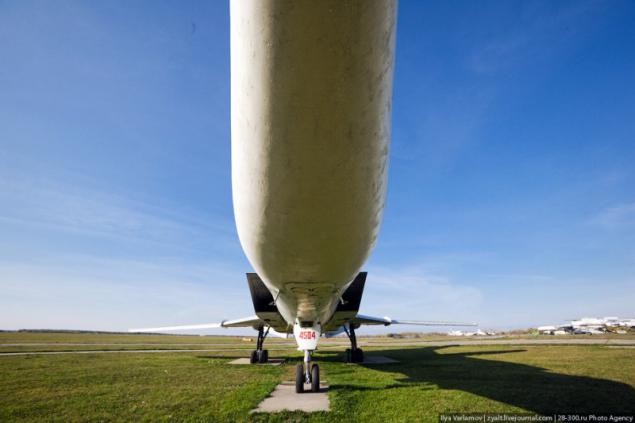
18. The aircraft Tu-22M series made by the normal aerodynamic scheme cantilever mid with variable sweep wing. The wing consists of a fixed part and a rotary consoles. Wing sweep varies smoothly from 20 ° to 60 ° with fixation in any intermediate position.
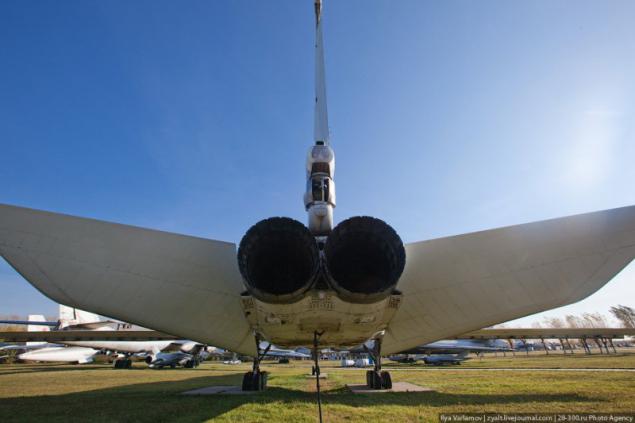
19. During the war in South Ossetia in August 2008, one Tu-22M3 was shot down by Georgian air defense unit. The use of such aircraft within range of enemy air defenses were not fully justified, acknowledged that the deputy chief of the General Staff of the Russian Armed Forces, Colonel-General Anatoly Nogovitsin.

20. And this is the Tu-22M2. First built at the Kazan aircraft plant Tu-22M2 flight made May 7, 1973 (testing and refinement continued until 1975). In August 1976 Tu-22M2 was adopted into service long-range aviation and naval aviation. Serial production of Tu-22M2 lasted until 1983. During this time it was built 211 Tu-22M2.
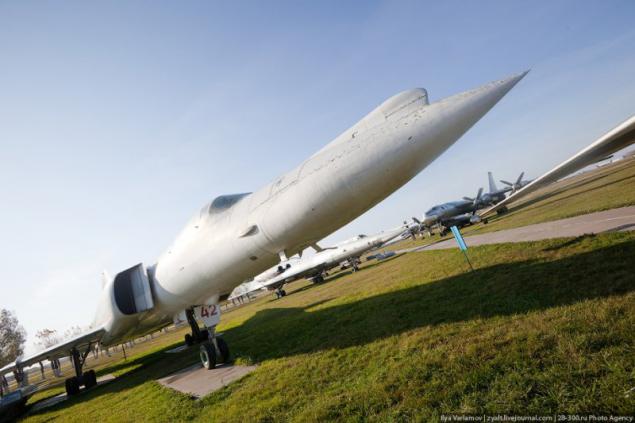
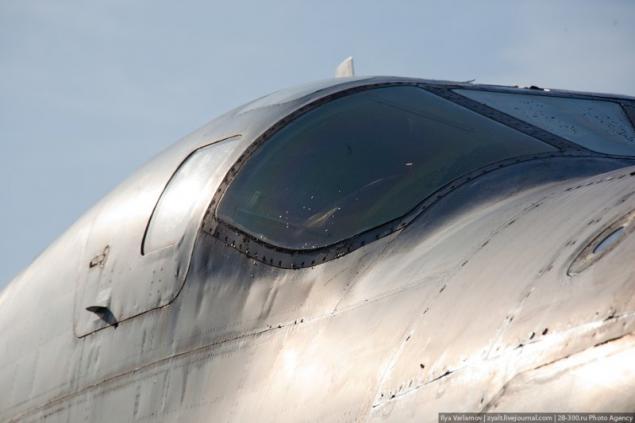
22. Tu-16 to NATO codification "Badger" - Soviet long-range twin-engine jet bomber bomber. Produced in various versions, including the missile-carrying variant aircraft - refueling, aircraft EW et al. Commercially produced from 1953 to 1963, three aviation plants. The design of the aircraft included a number of features that give the Tu-16 is very distinctive appearance and make it one of the most beautiful and recognizable aircraft world - "drowned" in the fuselage of the engine nacelles, a large sweep tail, light and robust design high aspect ratio wing.
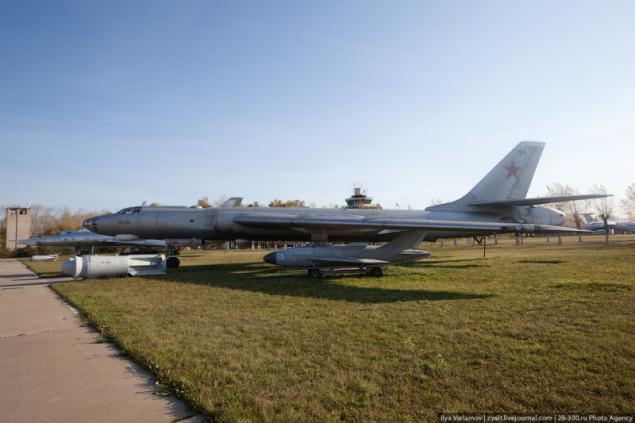
23. For decades, the Tu-16 remained the main plane of the aviation component of strategic deterrence forces of the USSR. Tu-16 naval aviation performed the tasks of tracking and tracking US carrier strike groups in the Northern Hemisphere. During the 1967 Six Day War, the Israeli Air Force, through the use of the element of surprise, destroyed on the ground 30 Tu-16 of the Egyptian Air Force. During the Afghan war, the Tu-16 was repeatedly applied to the bombing of Afghanistan. The aircraft has undergone dozens of improvements and re-equipped with new types of weapons and avionics. In Russia, it was finally withdrawn from service in the early '90s, becoming one of the most long-lived of combat aircraft in history, and, of course, a masterpiece of aircraft design ideas. Chinese version of the Tu-16 still stands in service.
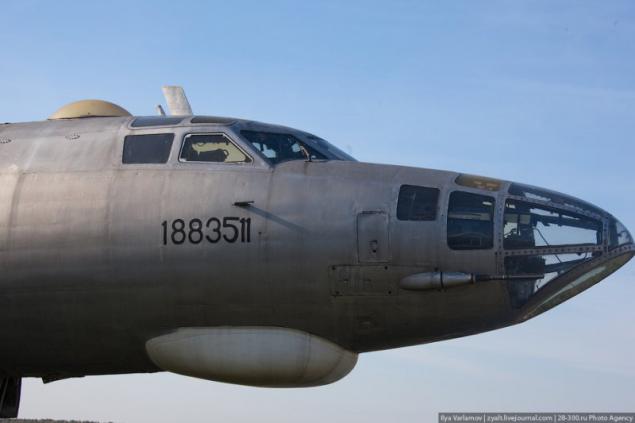
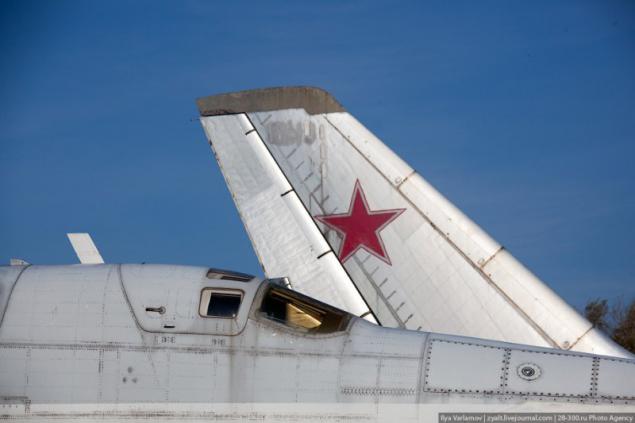
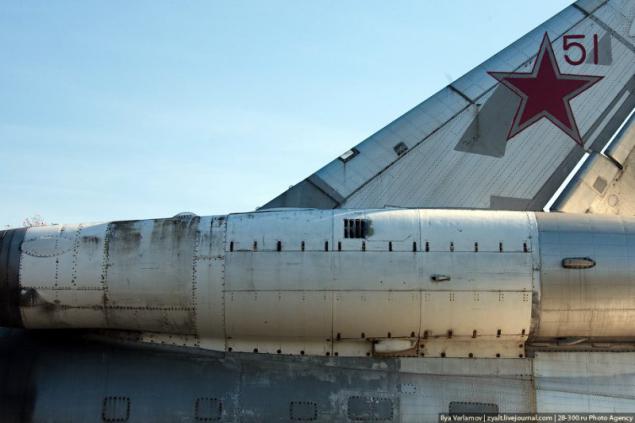
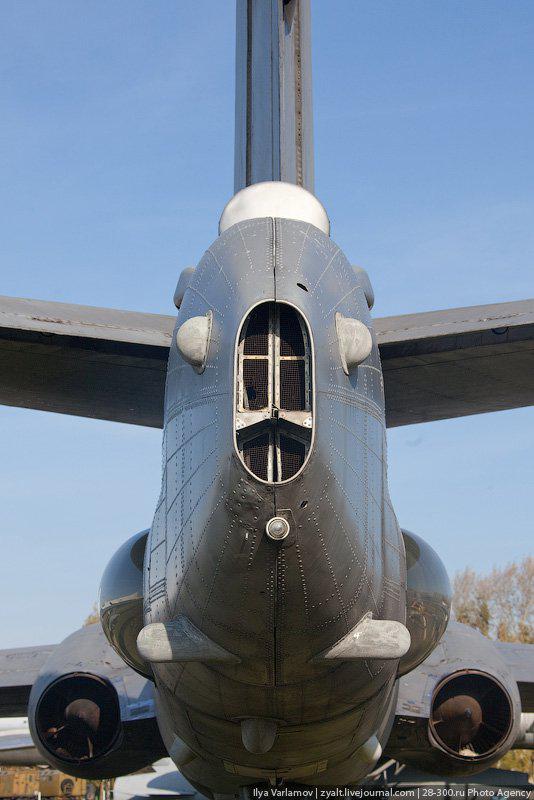
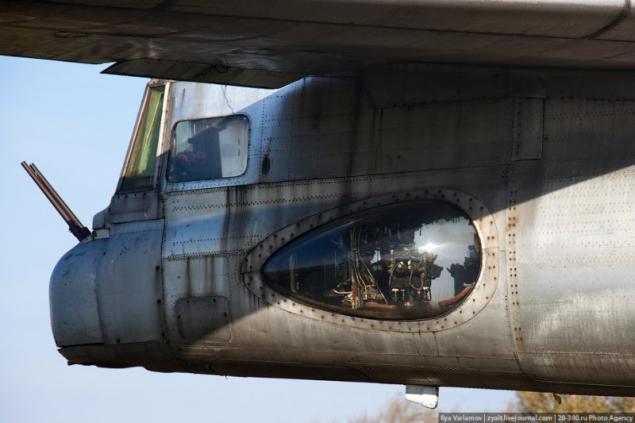
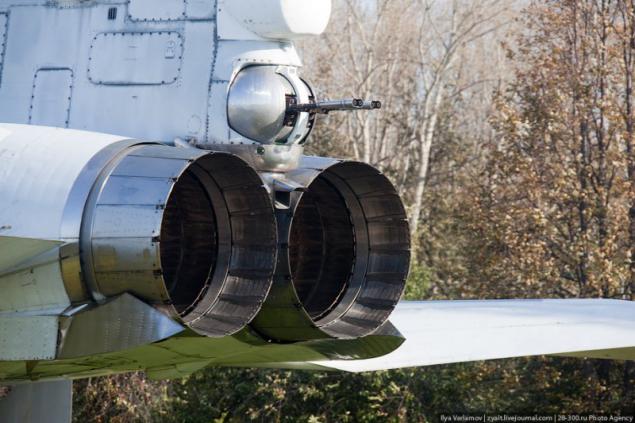
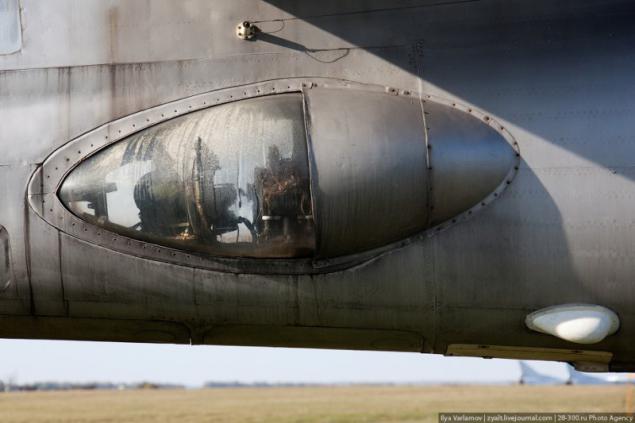
30. In the distant visible aircraft airbase Diaghilev Orlovsky Regiment stationed here refueling aircraft strategic aviation (IL-78), 58-th separate military transport aviation squadron of airborne troops.

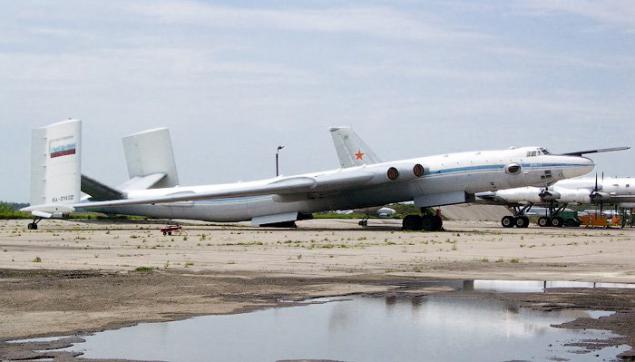
Tu-22M3 renovated at the local ARP, it will pass on to the Air Force.
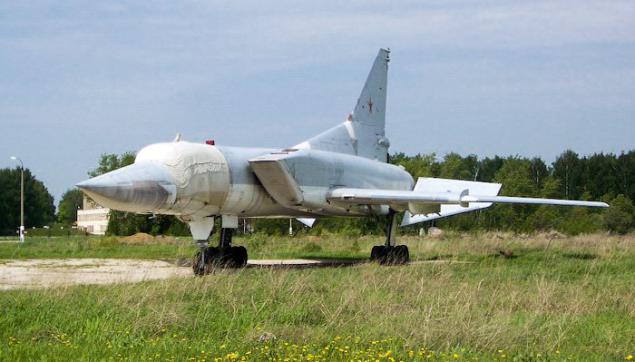
Tu-95MS
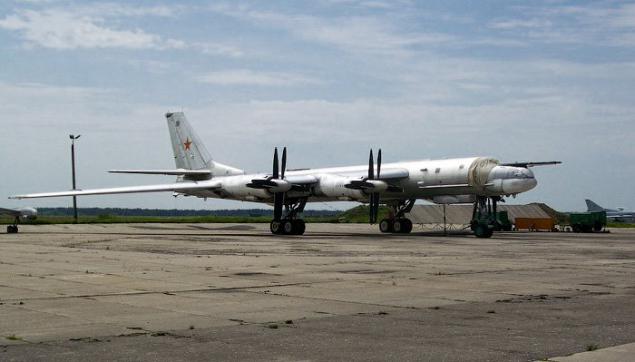
M-4

Tu-22M3 to maintain. Aircraft fighting, used to train pilots sotsava.
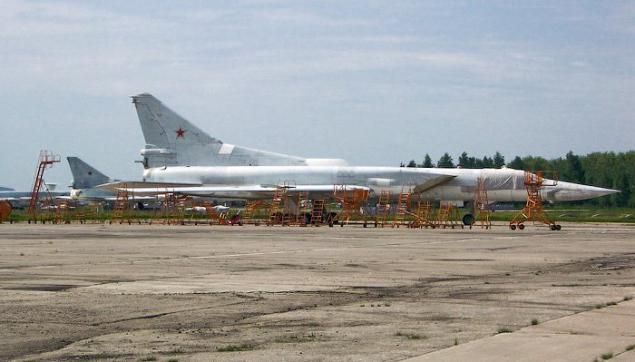
IL-76, "sincerity" - Soviet medium military transport aircraft designed by Ilyushin Design Bureau. IL-76 of various modifications is the main plane of military transport aviation in Russia and Ukraine. Also a member of the Air Force of the CIS countries, Algeria, India, Jordan, Iran, Iraq, China, Libya, North Korea and Syria.

Author zyalt
1. We begin our tour with the TU-95 is a Soviet turboprop strategic bomber-missile, one of the fastest screw aircraft, which became one of the symbols of the Cold War. Russian bear. The only accepted for service and mass production of turboprop bomber. Designed to engage cruise missiles important objects in the rear of the enemy at any time and under any weather conditions. In operation since 1956.

2. TU-95 went into the series with engines NK-12. NK-12 engine is still the most powerful turboprop engine in the world. NK-12 has a 14-stage compressor and a five-speed high-efficiency turbine. Efficiency of the turbine engine NK-12 is 94%, which is a record.

3. High engine power and screw design determines its unprecedented noise, Tu-95 is one of the noisiest aircraft in the world and even pinpoint detection systems on submarines, but this is not critical when applying massive missile and nuclear strikes.

4. Coaxial screws with variable pitch (AB-60K) installed on the Tu-95, had a diameter of more than 6 meters. The aircraft has an automatic engine start. Fuel is located in the wing and fuselage 11 soft fuel tanks.

5. Defensive armament Tu-95 consists of 23-mm aircraft cannons. On the different versions of the aircraft number varies from six paired guns AM-23 in three defensive units (upper, lower and stern lights) to two guns GS-23 aft.

6. Bomb load Tu-95 can reach 12,000 kg. In the fuselage bomb bay can be accommodated svobodnopadayuschie (including nuclear) bombs caliber up to 9000 kg.


Twin cannon fodder in the lantern.

9. Nearby are the TU-95MS. These modifications of the Tu-95 aircraft form the basis of the strategic forces of Russia, is the carrier of cruise missiles X-55. In a modification of the Tu-96MS6 in the bomb bay on the rocker launcher drum which is located six such missiles. In a modification of the Tu-95MS16 in addition to vnutrifyuzelyazhnyh launcher, suspension provided ten more X-55 missiles on four underwing holders. Strictly speaking, the Tu-95MS is a variant of the Tu-142, instead of the original Tu-95.


11. M-4, according to NATO classification "Bison" - the world's first jet bomber, received by the troops. Created simultaneously with the Tu-95, differing from it more speed, but less range. In order to reduce the weight used Large assembly, which complicates the production of the aircraft. The same feature was aerodynamically clean wing (absence of gondolas for the chassis and engines on the wing) and as a consequence - the "bicycle" chassis that's just made it extremely difficult to land the plane and practically impossible modernization of the bomb bay and the use of external load.

12. One of the most beautiful aircraft. Maximum take-off weight of the airship was 181, 5 tons, the speed at an altitude of 6700 m reached 947 km / h, service ceiling at takeoff weight of 138 tons - 12,500 m. The designers were able to place on the plane at the time a huge amount of fuel - 132 390 liters, but real maximum filling is limited to 123600 liters.

13. The museum is a modification of the M-4 Fuel tanker. In the bomb bay placed an additional tank, fuel transfer equipment and winches for the release of the "cone».

14. Of particular interest is the received version of the chassis bomber "M". Was chosen bicycle scheme from the front "vzdyblivayuscheysya" trolley and side pillars at the wing tips. Rotate carried out by controlling the head a couple of four-wheel bogie wheels on the front. Turn the pair to change the direction of the trolley, and behind it - and the entire aircraft. On mode "vzdyblivaniya" control pair is automatically turned off. At the end of a running nose of the car is lifted and the angle of attack is increased. Takeoff occurred with little or no intervention of the pilot.


16. Tu-22M, for the codification of NATO: Backfire - long-range supersonic bomber bomber / reconnaissance variable geometry wing. The maximum speed of 2300 km / h, the maximum speed of the earth in 1050 km / h cruising speed of 930 km / h, the takeoff speed of 370 km / h, the landing speed of 285 km / h; ceiling of 13 300 m; combat range with combat load of 12 000 kg at supersonic speeds 1500-1850 km at subsonic speeds and extremely low altitude - 1500-1650 km at subsonic Mixed profile - 2410 km, the length of the runway of 2000-2100 m; path length of 1200-1300 m, maximum operating overload 2, 5.

17. Air intakes with a vertical wedge (Tu-22M3 - horizontal) are located on the sides of the fuselage. Fuel capacity is located in integral tanks in the front (1, 2 tanks), medium (3, 4, 5), the tail (6, 7, 8, tanks) of the fuselage, a tail fin (9 tank) and wing tanks, including a rotatable portion of the wing (console).

18. The aircraft Tu-22M series made by the normal aerodynamic scheme cantilever mid with variable sweep wing. The wing consists of a fixed part and a rotary consoles. Wing sweep varies smoothly from 20 ° to 60 ° with fixation in any intermediate position.

19. During the war in South Ossetia in August 2008, one Tu-22M3 was shot down by Georgian air defense unit. The use of such aircraft within range of enemy air defenses were not fully justified, acknowledged that the deputy chief of the General Staff of the Russian Armed Forces, Colonel-General Anatoly Nogovitsin.

20. And this is the Tu-22M2. First built at the Kazan aircraft plant Tu-22M2 flight made May 7, 1973 (testing and refinement continued until 1975). In August 1976 Tu-22M2 was adopted into service long-range aviation and naval aviation. Serial production of Tu-22M2 lasted until 1983. During this time it was built 211 Tu-22M2.


22. Tu-16 to NATO codification "Badger" - Soviet long-range twin-engine jet bomber bomber. Produced in various versions, including the missile-carrying variant aircraft - refueling, aircraft EW et al. Commercially produced from 1953 to 1963, three aviation plants. The design of the aircraft included a number of features that give the Tu-16 is very distinctive appearance and make it one of the most beautiful and recognizable aircraft world - "drowned" in the fuselage of the engine nacelles, a large sweep tail, light and robust design high aspect ratio wing.

23. For decades, the Tu-16 remained the main plane of the aviation component of strategic deterrence forces of the USSR. Tu-16 naval aviation performed the tasks of tracking and tracking US carrier strike groups in the Northern Hemisphere. During the 1967 Six Day War, the Israeli Air Force, through the use of the element of surprise, destroyed on the ground 30 Tu-16 of the Egyptian Air Force. During the Afghan war, the Tu-16 was repeatedly applied to the bombing of Afghanistan. The aircraft has undergone dozens of improvements and re-equipped with new types of weapons and avionics. In Russia, it was finally withdrawn from service in the early '90s, becoming one of the most long-lived of combat aircraft in history, and, of course, a masterpiece of aircraft design ideas. Chinese version of the Tu-16 still stands in service.







30. In the distant visible aircraft airbase Diaghilev Orlovsky Regiment stationed here refueling aircraft strategic aviation (IL-78), 58-th separate military transport aviation squadron of airborne troops.


Tu-22M3 renovated at the local ARP, it will pass on to the Air Force.

Tu-95MS

M-4

Tu-22M3 to maintain. Aircraft fighting, used to train pilots sotsava.

IL-76, "sincerity" - Soviet medium military transport aircraft designed by Ilyushin Design Bureau. IL-76 of various modifications is the main plane of military transport aviation in Russia and Ukraine. Also a member of the Air Force of the CIS countries, Algeria, India, Jordan, Iran, Iraq, China, Libya, North Korea and Syria.

Author zyalt



